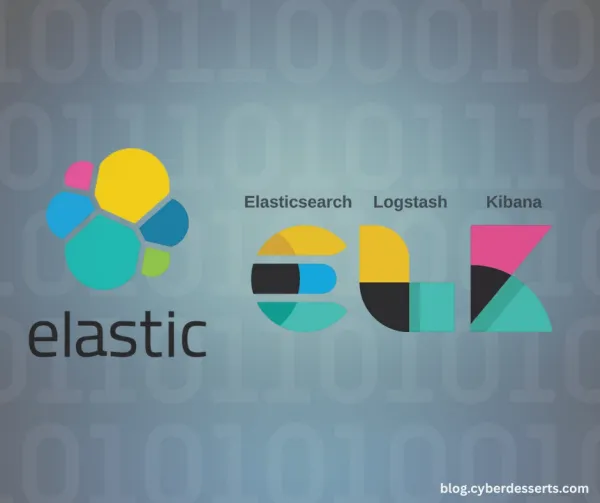The 12 Most Prevalent AI Security Threats Organizations Are Facing in 2025
TL;DR: AI-driven attacks now account for 16% of all breaches (IBM, 2025), with shadow AI adding $670,000 to average breach costs. From deepfake BEC scams to prompt injection attacks, the threat landscape is evolving faster than most security programs can adapt.

Before we dive into the threat landscape, if you're wondering where your organization stands on AI security maturity, check out the Shadow AI Maturity Assessment for an easy way to evaluate your readiness.
The AI Security Threat Landscape: Attack Vectors Ranked by Prevalence
Here is a look at the predicted growth of AI capability over the coming years.
So here's a breakdown of the 12 most significant AI security threats based on current prevalence data and reports across the industry:
| Attack Vector | Prevalence | Details |
|---|---|---|
| 1. Generative Social Engineering | 36% of Unit 42 cases (Palo Alto, 2025) | Deepfakes: 6.5% of fraud. AI voice clones, deepfake calls, synthetic personas. 320+ companies infiltrated (CrowdStrike, 2025) |
| 2. Malware as AI Tools | 177 malicious binaries as ChatGPT (Unit 42, 2025) | Credential stealers and ransomware disguised as "ChatGPT downloads." Employees install malware thinking they're getting AI tools. |
| 3. Prompt Injection | #1 on OWASP LLM Top 10 (OWASP, 2025) | Malicious prompts in emails, documents, web data. LLM follows attacker instructions instead of yours (Slack AI breach example). |
| 4. AI-Generated Phishing Domains | 90% of incidents start with phishing (Fortinet, 2025) | AI generates thousands of Unicode look-alike domains automatically, testing for evasion at machine speed. |
| 5. Malicious IDE Extensions | First IDE attack: $500K (Unit 42, 2025) | Compromised VS Code, GitHub Copilot extensions inject malicious code or exfiltrate proprietary codebases. |
| 6. Quishing (QR Phishing) | 784 UK cases, £3.5M losses; 26% phishing via QR (Unit 42, 2025) | QR codes + AI-generated images. Vision LLMs tricked by malicious content in images, PDFs, memes. |
| 7. Vibe Coding Vulnerabilities | 45% of AI code has vulnerabilities (Veracode, 2025) | Non-developers trust AI-generated code without review, flooding production with SQL injection and broken authentication. |
| 8. Synthetic Insider Infiltration | 320 AI-identity hires, 220% YoY (CrowdStrike, 2025) | Fake LinkedIn, work histories, deepfake interviews. Billions in revenue funding North Korea weapons programs. |
| 9. Autonomous Attack Agents | Reproduced Equifax breach with LLM (Anthropic, 2025) | AI plans multi-stage attacks autonomously. China/Iran actors use AI for vulnerability discovery (Google Cloud, 2025). |
| 10. Model Poisoning | "Sleeper Agents" (200+ citations) (Anthropic, 2024) | Malicious training data creates persistent backdoors that activate under specific conditions. Survives RLHF training. |
| 11. Model Inversion | 40%+ AI breaches from cross-border GenAI by 2027 (Gartner, 2025) | Query models to extract training data or membership inference. Privacy concerns for fine-tuning on sensitive data. |
| 12. Adversarial Patches | ~65% CCTV evasion success (Academic, 2025) | T-shirt patches fool computer vision. Academic but advancing, relevant for AI surveillance/autonomous systems. |
Where Next: Proven Defense Strategies
While we will keep monitoring the threat landscape, based on current best practices, as you can imagine, effective AI security requires a multi-layered approach:
Governance First: 63% of breached companies lacked AI governance policies (IBM, 2025). For implementation guidance, see the AI Acceptable Use Policy Guide.
Layered Controls: Combine AI tool discovery, strong access controls with phishing-resistant authentication, data classification, prompt filtering, and runtime monitoring.
Address Credentials: 86% of breaches involve stolen credentials (Sprinto, 2025). Implement controls for non-human identities and adopt passkeys.
Test Response Plans: Organizations took 100+ days on average to recover from breaches (IBM, 2025). Regular IR testing and crisis simulations are critical.
The Human Element Still Dominates
Despite all the AI sophistication, 77-95% of breaches still come down to mistakes or manipulation (Sprinto, 2025). Security awareness training has an important part to play and needs to be adapted for AI threats. Teams need to recognize AI-generated phishing, deepfake video calls, and synthetic identities, not just traditional attacks.
The Bottom Line
AI has surpassed ransomware as the top security concern (Arctic Wolf, 2025). The gap between AI adoption and AI security creates exploitable blind spots that attackers are actively targeting.
Key takeaways:
- Start with governance: Use our Shadow AI Maturity Assessment to understand where you stand and start with an AI Acceptable Use Policy
- Layer your defenses: Combine discovery, access controls, data classification, and runtime monitoring
- Use established frameworks: OWASP, ATLAS, NIST AI RMF, ISO 42001, and EU AI Act provide proven approaches
- Don't forget humans: 77-95% of breaches still involve human mistakes or manipulation
- Test continuously: Move beyond annual assessments to continuous validation of AI security controls
This threat landscape evolves rapidly. Organizations treating AI security as foundational, not optional, are building adaptive programs that evolve with emerging threats.
What AI security threats concern you most? How is your organization addressing shadow AI?
This article is regularly updated as the AI threat landscape evolves. Last updated: October 2025
References and Sources
- IBM Security. (2025). Cost of a Data Breach Report 2025. IBM and Ponemon Institute. Retrieved from https://www.ibm.com/reports/data-breach
- Palo Alto Networks Unit 42. (2025). 2025 Unit 42 Global Incident Response Report: Social Engineering Edition. Retrieved from https://unit42.paloaltonetworks.com/2025-unit-42-global-incident-response-report-social-engineering-edition/
- CrowdStrike. (2025). 2025 Threat Hunting Report. Retrieved from https://www.crowdstrike.com/resources/reports/threat-hunting-report/
- OWASP Foundation. (2025). OWASP Top 10 for Large Language Model Applications 2025. Retrieved from https://genai.owasp.org/llm-top-10/
- Arctic Wolf. (2025). State of Cybersecurity: 2025 Trends Report. Retrieved from https://arcticwolf.com/resources/research/state-of-cybersecurity-2025/
- Gartner, Inc. (2025). Predicts 2025: Privacy in the Age of AI and the Dawn of Quantum. Retrieved from https://www.gartner.com/en/newsroom/press-releases/2025-02-17-gartner-predicts-forty-percent-of-ai-data-breaches
- Microsoft. (2025). Microsoft Threat Intelligence Report 2025. Microsoft Security.
- Veracode. (2025). State of Software Security Report 2025. Veracode.
- Google Cloud Threat Intelligence. (2025). Threat Horizons Report. Google Cloud.
- MITRE Corporation. (2025). MITRE ATLAS (Adversarial Threat Landscape for Artificial-Intelligence Systems). Retrieved from https://atlas.mitre.org/
- Sprinto. (2025). Data Breach Statistics 2025: Costs, Risks, and the Rise of AI-Driven Threats. Retrieved from https://sprinto.com/blog/data-breach-statistics/
- CFO Magazine. (2025). Cybersecurity Survey: AI-Driven Threats. CFO Research.
- Tech Advisors. (2025). AI Cyber Attack Statistics 2025. Retrieved from https://tech-adv.com/blog/ai-cyber-attack-statistics/
- Fortinet. (2025). Top Cybersecurity Statistics: Facts, Stats and Breaches for 2025. Retrieved from https://www.fortinet.com/resources/cyberglossary/cybersecurity-statistics
- Anthropic. (2025). Research on LLM Capabilities and Security. Anthropic AI Safety.
- Anthropic. (2024). Sleeper Agents: Training Deceptive LLMs that Persist Through Safety Training. Anthropic Research.
- National Institute of Standards and Technology (NIST). (2023). AI Risk Management Framework (AI RMF 1.0). Retrieved from https://www.nist.gov/itl/ai-risk-management-framework
- International Organization for Standardization (ISO). (2023). ISO/IEC 42001:2023 - Information technology, Artificial intelligence, Management system. Retrieved from https://www.iso.org/standard/81230.html
- European Commission. (2024). EU Artificial Intelligence Act. Official Journal of the European Union.
- The Hidden Danger in OpenAI's New ChatGPT Atlas Browser



